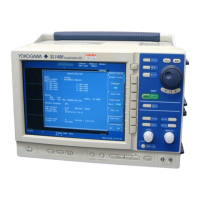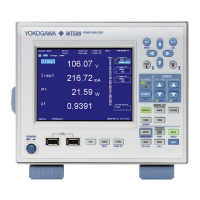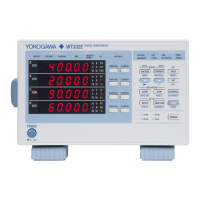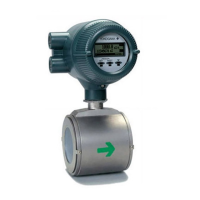2-23
IM 701240-01E
2
1
4
5
6
7
8
9
10
11
12
13
14
15
16
17
18
App
Index
Explanation of Functions
Wave Window Trigger
This trigger is used to monitor the power supply waveform. It detects abnormalities in the
power supply (disruption, sag, surge, frequency fluctuation, voltage drop, etc.).
A reference waveform (realtime template) is created by setting a tolerance (window width) to a
waveform derived by averaging 1 to 4 cycles of waveforms before the target cycle of the
current waveform. The current waveform is compared against the realtime template. If the
current waveform falls outside the realtime template, a trigger is activated.
4 cycles of the waveform immediately before
Target waveform
Power supply waveform
Averaged waveform
of 1, 2, and 4 cycles
Realtime template
Averaged waveform
+ tolerance width
Compare the target waveform against
the realtime template
Trigger activated when the current waveform
falls outside the realtime template
Trigger activated here
•Wave Window Trigger Example
Disruption
(Trigger)
Sag
(Trigger)
Sag
(Trigger)
Surge
(Trigger)
ON: Use as a trigger source
OFF: Not use as a trigger source
CH1 to CH16
Cycle Frequency: Power supply frequency of the measured item
Reference Cycle
Sync. Ch: Synchronization channel
1
for starting triggers
Level: Level of the synchronization channel
Hys: Hysteresis of the synchronization channel
* Because waveform determination is performed per cycle in wave window trigger,
synchronization signal must be retrieved from the reference channel, and the start and end
points of comparison must be detected. This reference channel is called a synchronization
channel. Sync.Ch is used to specify the synchronization channel, and Level is used to specify
the start level of the synchronization channel. Normally, Sync.Ch is set to Auto (the channel
with the smallest number among the modules that can perform wave window trigger). If the
trigger is not activated adequately, specify an appropriate channel.
2.3 Setting the Trigger

